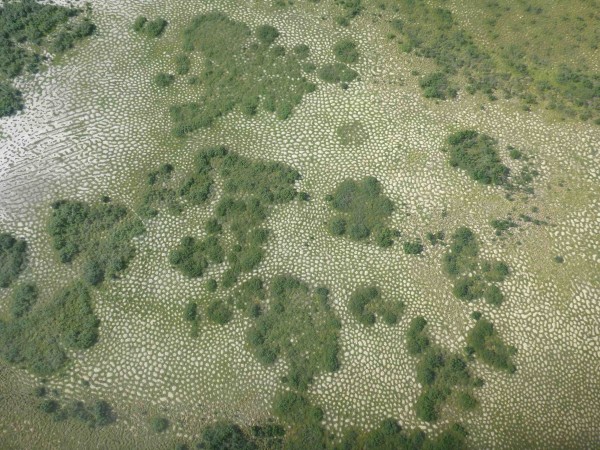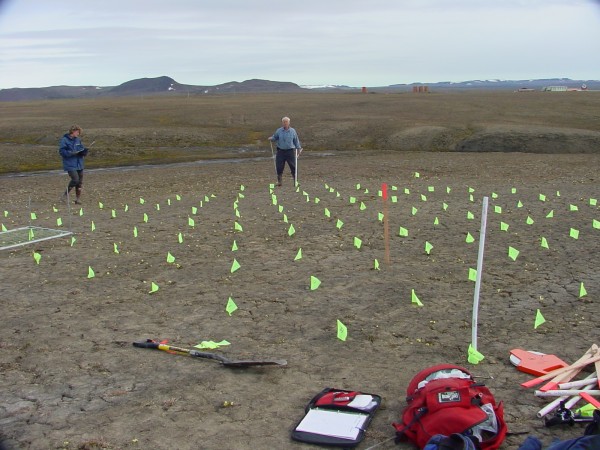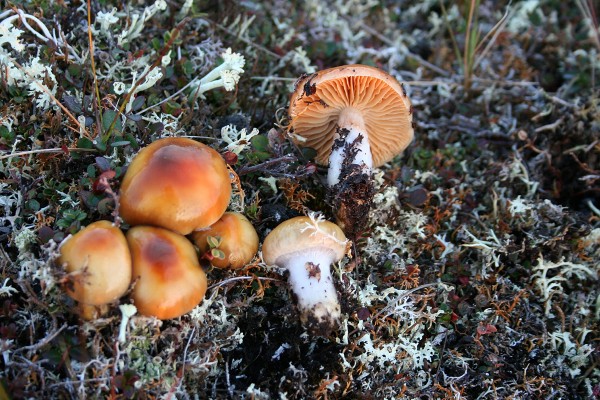Researchers discuss the greening of the Arctic
March 12, 2014

Diana Campbell
907-474-5229
If you take a walk in the high Arctic, you may not notice the effects from climate change in the flora. Vegetation changes slowly over long periods of time.
But if you look from space, over decades, the change in the Arctic is obvious.
Skip Walker saw the pronounced greening trend in Alaska’s Arctic after looking at satellite data spanning 20 years. His observations led to new research questions, which launched a major investigation of global Arctic greening patterns spanning two continents and a decade of research.
“If vegetation is increasing in a steady way, then something is going on,” said Walker, a geobotanist with the Institute of Arctic Biology at the University of Alaska Fairbanks.

Changes to the vegetation begin with changes in the soil. Bodies of ice in the soil, called ice wedges, are disappearing.
“Thawing ice wedges are causing dramatic changes to some of the study sites along the transects,” said Vladimir Romanovsky, a geophysicist with UAF. “We saw trenches and troughs starting to form at several of our monitoring sites.”
Warming is also evident in changes to small circular patterns on the ground called frostboils. As the ground freezes, underground ice pushes the soil up. When it thaws, the ground collapses, leaving an indentation.
These spots react to changes in the amount of heat, water, and the vegetative cover, said Ronald Daanen, a permafrost hydrologist with the Alaska Division of Geology and Geophysical Surveys, who modeled changes to these features.
Shrubs tend to colonize the frost boils, taking permanent root. Gerald Frost, a vegetation scientist at Alaska Biological Research Inc., found that alders prefer to germinate on the warmed soils of frostboils in spite of frost heave.
Closer to the ground are a multitude of smaller plant life. Martha Raynolds, a UAF plant ecologist, got up close and personal with the plants.
“The Arctic has complex landscapes,” Raynolds said. She also looked at how the plants are viewed from satellites. The team identified a 20 percent increase in arctic plant biomass in the last 30 years.
The vegetation wouldn’t be possible without fungi, as both coexist in a symbiotic relationship, said Ina Timling, a UAF graduate who worked on the project and earned her doctorate.

“If the tree line is expanding,” Timling said, “the fungi are already there.”
The warming is correlated with disappearing sea ice, the researchers found. Consider standing next to an ice-bound lake on a spring day. The air will be much colder than it would be if there were no ice.
About 80 percent of tundra is within 60 miles of the ocean, Bhatt said. She compared field observations with satellite data of changes to vegetation, sea ice and land-surface temperatures.
“We saw a close correlation between changes in sea ice extent, land warming and patterns of greening, but also many surprises,” Bhatt said. “It’s not a simple story here.”
The topic was part of the 2014 Science for Alaska Lecture Series provided by UAF’s Geophysical Institute and the Alaska Experimental Program to Stimulate Competitive Research.


